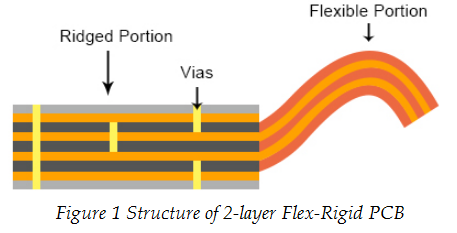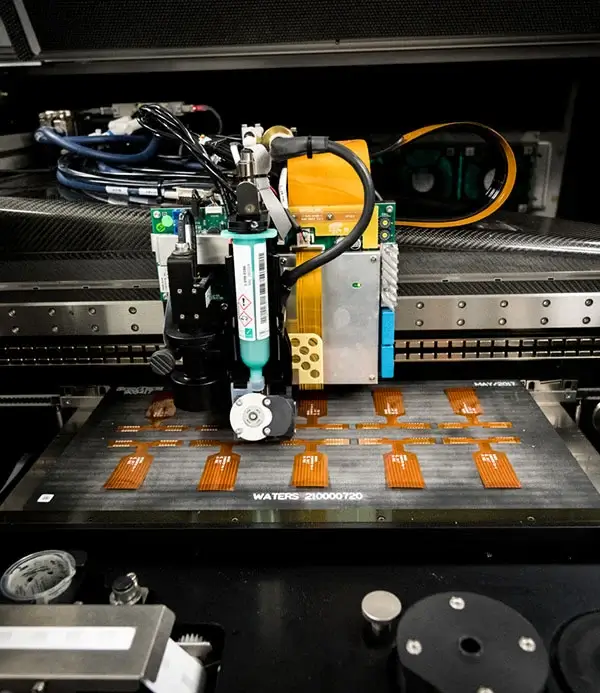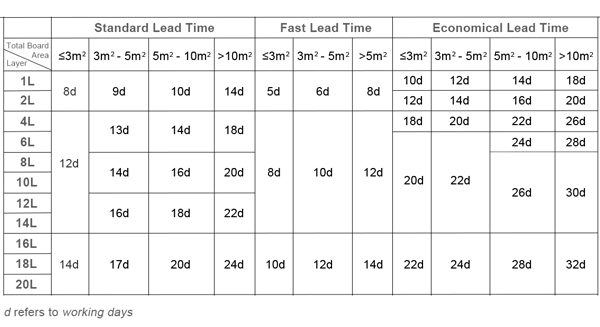In the fast-paced world of electronics, getting your rigid-flex PCB to market quickly can make or break a project. Long lead times in rigid-flex PCB manufacturing often frustrate engineers and product developers who need speed without sacrificing quality. So, how can you accelerate PCB production while navigating the complexities of rigid-flex design? The answer lies in understanding the challenges and adopting smart strategies to streamline the process.
In this comprehensive guide, we’ll dive deep into the hurdles of rigid-flex PCB lead times and share actionable strategies to speed up production. Whether you’re working on a compact wearable device or a high-performance aerospace system, this blog will help you optimize your workflow for faster results. Let’s explore the intricacies of rigid-flex PCB manufacturing, design considerations, and proven methods to reduce PCB flex time.
What Are Rigid-Flex PCBs and Why Do Lead Times Matter?
Rigid-flex PCBs combine the best of both worlds: the durability of rigid boards and the adaptability of flexible circuits. These hybrid boards are essential in applications where space is tight, and reliability is critical, such as medical devices, automotive systems, and consumer electronics. Their unique structure allows them to bend and fold, fitting into compact designs while maintaining strong electrical connections.
However, the complexity of rigid-flex PCB manufacturing often results in longer lead times compared to standard rigid boards. Delays can stall product launches, increase costs, and frustrate project timelines. For engineers and businesses, minimizing PCB flex time isn’t just a convenience—it’s a competitive necessity. Understanding the root causes of these delays is the first step to overcoming them.

Key Challenges in Rigid-Flex PCB Manufacturing Lead Times
The production of rigid-flex PCBs involves multiple intricate steps, each with potential bottlenecks. Below, we break down the primary challenges that contribute to extended lead times in rigid-flex PCB manufacturing.
1. Complex Design Requirements
Rigid-flex design is inherently more complicated than traditional PCB layouts. Engineers must account for bend radius limitations, layer stacking, and material compatibility between rigid and flexible sections. A typical rigid-flex board may have 4 to 12 layers, with flexible substrates like polyimide requiring precise alignment with rigid FR-4 materials. Missteps in design, such as ignoring minimum bend radii (often around 10 times the thickness of the flex layer), can lead to mechanical failures or signal integrity issues, necessitating costly redesigns and delays.
2. Material Selection and Availability
Choosing the right materials for rigid-flex PCBs is critical but challenging. Flexible materials like polyimide are more expensive and less widely available than standard rigid laminates. Additionally, adhesive-less materials, which improve reliability by reducing delamination risks, often have longer procurement times. Supply chain disruptions or shortages can push lead times from a standard 2-3 weeks to 4-6 weeks or more, especially for specialized stack-ups.
3. Intricate Manufacturing Processes
The manufacturing of rigid-flex PCBs involves unique processes like lamination, drilling, and plating that require specialized equipment and expertise. For instance, the lamination process must ensure perfect bonding between rigid and flexible layers under controlled heat and pressure (often at 180°C for 2 hours). Any deviation can cause defects, leading to rework. Cleaning drilled holes in flexible sections is also tricky, as debris can compromise connectivity, adding extra time for quality checks.
4. Testing and Quality Assurance
Rigid-flex PCBs must undergo rigorous testing to ensure they meet performance standards, especially for high-reliability applications. Tests for signal integrity (ensuring impedance control within ±10% tolerance, often around 50 ohms for high-speed signals) and mechanical stress (simulating thousands of bend cycles) are time-intensive. A single failed test can send the board back to production, extending lead times by days or weeks.

Strategies to Accelerate PCB Production and Reduce Lead Times
While challenges in rigid-flex PCB manufacturing are inevitable, there are practical ways to streamline the process and achieve faster production. Here are proven strategies to help you accelerate PCB lead times without compromising quality.
1. Optimize Rigid-Flex Design for Manufacturability
Design for manufacturability (DFM) is a powerful way to cut down on production delays. Start by simplifying your rigid-flex design where possible. Avoid overly tight bend radii—stick to manufacturer guidelines, such as a minimum radius of 1.5 mm for a 0.15 mm thick flex layer. Use teardrop vias instead of standard circular vias to reduce stress points, and incorporate large annular rings (at least 0.2 mm wider than the drill hole) to improve reliability. These small adjustments can prevent costly revisions and speed up the approval process.
Additionally, collaborate closely with your manufacturing partner during the design phase. Share detailed stack-up information and get feedback on potential issues like impedance mismatches (targeting 50-100 ohms for most high-speed designs). Early collaboration can shave days off your PCB flex time by avoiding back-and-forth iterations.
2. Choose Readily Available Materials
To avoid delays caused by material shortages, opt for commonly stocked materials whenever performance requirements allow. For instance, standard polyimide films with a thickness of 0.05 mm to 0.1 mm are often more accessible than custom variants. If adhesive-less materials are necessary for high-temperature applications (up to 260°C during soldering), confirm availability with your supplier upfront. Planning material procurement early can reduce lead times by up to 30%, keeping your project on track.
3. Leverage Quick-Turn Manufacturing Services
Many manufacturers offer quick-turn services tailored for engineers who need to accelerate PCB production. These services prioritize speed, often delivering prototypes in as little as 5-7 days compared to the standard 2-3 weeks. While quick-turn options may come at a premium, they’re ideal for urgent projects or initial testing phases. Ensure your design files are complete and error-free before submission to avoid delays in the expedited process.

4. Streamline Testing with Simulation Tools
Before sending your design for production, use simulation software to predict and resolve potential issues. Tools that model signal integrity can help you verify that impedance values stay within tolerance (e.g., ±5% of 50 ohms for differential pairs) and identify crosstalk risks in high-speed circuits (signal speeds up to 10 Gbps). Mechanical simulations can also test bend stress, ensuring your flex layers withstand repeated folding. By catching problems early, you reduce the likelihood of failed physical tests, saving days or weeks in rework time.
5. Partner with an Experienced Manufacturer
The expertise of your manufacturing partner plays a huge role in minimizing PCB flex time. Look for a provider with a proven track record in rigid-flex PCB manufacturing, as they’ll have optimized processes and access to advanced equipment. A reliable partner can also offer in-house testing, reducing the need to outsource quality checks. Transparent communication about timelines and potential bottlenecks ensures you’re never left guessing about delivery dates.
6. Plan for Scalability from the Start
If you anticipate moving from prototype to full-scale production, design with scalability in mind. Standardize components and materials across your rigid-flex design to simplify bulk ordering later. For example, using a consistent flex layer thickness (like 0.075 mm) across multiple projects can reduce setup times for future runs. Planning ahead prevents last-minute design tweaks that could delay production by weeks.

Balancing Speed and Quality in Rigid-Flex PCB Production
While speeding up production is crucial, rushing the process can lead to quality issues that cost more time and money in the long run. Striking a balance between speed and reliability is key. Always prioritize thorough design reviews and testing, even if it adds a day or two upfront. A well-designed rigid-flex PCB with controlled impedance (e.g., 50 ohms for USB 3.0 signals) and robust mechanical properties (supporting 10,000+ bend cycles) will perform better and avoid costly field failures.
Work with your manufacturing partner to set realistic timelines. For complex designs with 8+ layers, expect lead times of 3-4 weeks even with optimization. For simpler 4-layer boards, 1-2 weeks is often achievable with quick-turn services. Clear communication about project priorities—whether speed, cost, or quality—ensures everyone is aligned.
Conclusion: Taking Control of Rigid-Flex PCB Lead Times
Rigid-flex PCB manufacturing comes with unique challenges, from intricate design requirements to material procurement delays. However, by implementing strategies like optimizing rigid-flex design, choosing accessible materials, leveraging quick-turn services, and partnering with experienced manufacturers, you can significantly reduce PCB flex time. The goal isn’t just to accelerate PCB production but to do so while maintaining the high standards needed for reliable, high-performance electronics.
At ALLPCB, we’re committed to helping engineers and businesses navigate the complexities of rigid-flex PCB production. With our expertise and dedication to fast, quality-driven manufacturing, we can help you bring your innovative designs to life without unnecessary delays. Start planning your next project with these strategies in mind, and take control of your production timeline today.
 ALLPCB
ALLPCB







